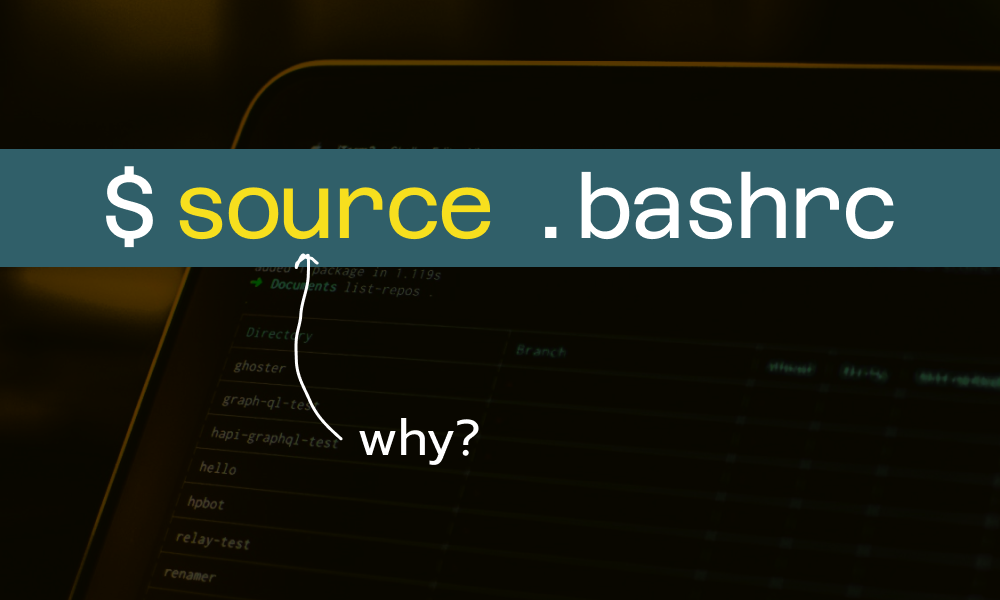Why should you source .bashrc?
March 5th, 2024

In my previous article, I explained the difference between sourceing and executing a script directly. That article led to this question I'm answering in this article.
If you've used shell configuration files like .bashrc or .zshrc before, you'd notice that often times you're instructed to do source .bashrc or source .zshrc when you make changes to these files. Why do you have to do this?
Configuration files run at the beginning of a terminal session
Say you're using bash for your terminal; the first time you open a terminal, .bashrc is read:
- the code in that file even those that you added will be run
- variables and functions from that file are exposed and accessible in your terminal
- then you can begin using the terminal
The same principle applies if you're using zsh. In that case, it reads from .zshrc.
You can actually try this by adding an echo "hello world" in such file:
.bashrc / .zshrc# some stuff hereecho "hello world"
Then create a new terminal shell, and you would see:
hello world
You can create any variable here. Often times, people add PATH here so they can use it in their terminal with other commands.
What happens when you make changes to this file?
When you make changes to that configuration file, those changes would not reflect in your current terminal session. Remember that file only ran at the beginning.
The new changes (for example, declared variables) would only reflect in a "new" terminal session. So you would have to close the current session, then create a new one which would include the updated changes from the configuration file.
What if you make another change to the configuration file? Uhmmmm...you need to create a new session to access those changes.
Closing and opening a new session all the time might not be the most convenient
And this is where you source.
Sourcing configuration files
By doing the following in your current terminal session:
source .bashrc
You are "reading" (executing) the configuration file again. Note that the configuration file is actually a script. And by using source, that execution takes place in the current shell (the current process). This way, any variables and functions you have there, becomes available in the current session.
No need to open another terminal session. You can carry on in the same terminal session with access to the updated configuration file.
Wrap up
So, you don't always need to source ... configuration files. The terminal already does that at the beginning of a session. If you want access to the updated configuration, you can create a new session.
But, if you want access to the updated configuration in the same terminal session, then source is a friendly tool for that purpose.
